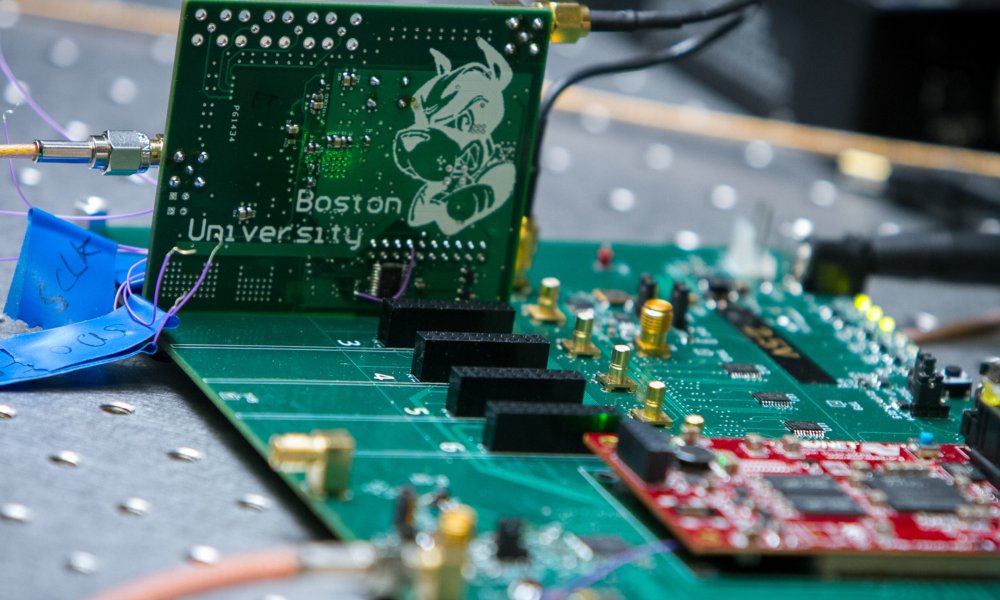Image courtesy of Boston University
What BOTLab learned in its Accelerator experience with GCMI

Dr. Darren Roblyer – Image courtesy of Boston University
In August 2018, the American Cancer Society provided a $100,000 grant to advance Dr. Darren Roblyer’s near-infrared spectroscopy technology closer to commercialization. The technology seeks to help determine how well chemotherapy is working to control disease in breast cancer patients using quantitative, real-time data.
The BOTLab team entered GCMI’s Accelerator program with a promising technology, clinical need and prototype. What they lacked was key commercialization inputs to help de-risk the technology and attract next level investment. What did they learn? Commercialization of BOTLab’s novel medical technology requires a capital efficient, multi-step plan.
Dr. Roblyer shared with us why the team is making this strategic course correction, learnings from BOTLabs’ time in GCMI’s Accelerator program and next steps.
Using a larger market and ‘lighter’ regulatory pathway to prove and commercialize the technology on which to predicate the next application
“A technology that uses light to measure cancer treatment response has yet to be fully commercialized,” Dr. Roblyer said. “Seeking regulatory approval for an oncology indication would have been a very heavy lift and likely a PMA application requiring significant amounts of clinical data in breast cancer treatment. A new device in a new field and new indication is a massive, costly undertaking.”
After talking with regulatory experts and clinicians, BOTLab plans to prove the technology with a 510K based on pulse oximetry. They believe the technology can improve a ubiquitous diagnostic measurement and also measure venous oximetry in a non-invasive way. Eliminating the need for invasive catheters to measure venous oximetry is advantageous to ICU clinicians and an attractive proposition for reimbursement.
“Our technology can capture and analyze measurements much faster than prior devices and allows us to address care in a way no one else can. We capture small changes in optical properties with every beat of the heart, and we process large amounts of data in a highly quantitative way to reveal tissue oxygenation. We anticipate our first iteration will look like an intravital ICU monitor.
“Once we have established the value and efficacy of the technology, we intend to use the data from the commercialized device to support another 510K in an oncology application. It makes sense from a regulatory, technology development, market, and payer strategy, all of which are needed to successfully commercialize new medical technologies.”
What did you learn that you would share with other university researchers?
“The ‘curse of the engineer’ is a very real thing. Just because you can build something does not mean it solves a meaningful clinical problem,” Dr. Robyler said. “Regulatory, business, and technology problems must be solved simultaneously. Is there a clinical problem that can be solved with the technology? Can providers afford your technology? Does it increase or decrease costs? Who is going to pay for it? Is the market size sufficient to support investment levels needed to satisfy a particular regulatory pathway? Address those questions early especially if there is high interest in commercialization. You will need to talk to a substantial and diverse group of experts to find a confident commercialization pathway.
“We often seek an application that fits the technology. Be open to the idea of adjusting your plan or pivoting. What you start with often morphs into something equally exciting and possibly more accomplishable.”
What surprised you most?
“The enormity of the documentation required for design and regulatory approval processes including design history files. You must document everything and anticipate the need for additional personnel. Knowing this early enables us to think about what we do in the lab differently. How do we impact patient care in a very real way, including satisfying the myriad requirements for commercialization?
How did GCMI deliver value to your project?
“We would be quite naive about what’s next if not for GCMI. It’s a bootcamp on medical technology commercialization for academic researchers. They exposed us to areas we must address in order to commercialize our technology. Designing processes including memos that will form the basis of internal documents eventually supporting regulatory submission and hopefully approval is of very high value and impossible to do on your own.
“GCMI also introduced us to prospective contract manufacturers, regulatory, testing and business professionals we will need moving forward. They expanded our ‘electronic rolodex’ so that we can reach out to the right people for future needs and questions, including funding.”
What would you tell a young engineering student with an idea for a technology or product about the development and commercialization process?
“There is so much to learn that if anyone told you all of it at once, it could be counter productive. Maintain your enthusiasm by focusing on patient impact. It will carry you through the difficult process.
“Outline in broad strokes approval pathways and business plans including who you think is going to pay for your technology. As a first step, talk to as many clinicians as you can. Make sure the idea is about changing clinical care that makes sense in the way healthcare is delivered.”
What’s next for BOTLab?
“We expect to have our next version of the device within months if not weeks,” Dr. Robyler said. “We will then freeze our design, refine our protocol for our cardiology application and gather first in human data to compare our technology with invasive catheterization measurements. If those data generate positive results, we will select a manufacturer and move quickly on our regulatory submission for that application.
“Our clinical partners on the cardio side including Boston Medical Center are ready to roll, and we will continue to work on our breast cancer application with Boston Medical’s Naomi Ko, MD.”
